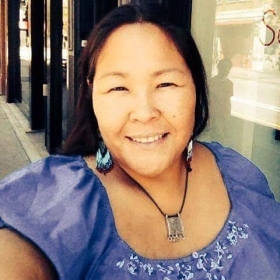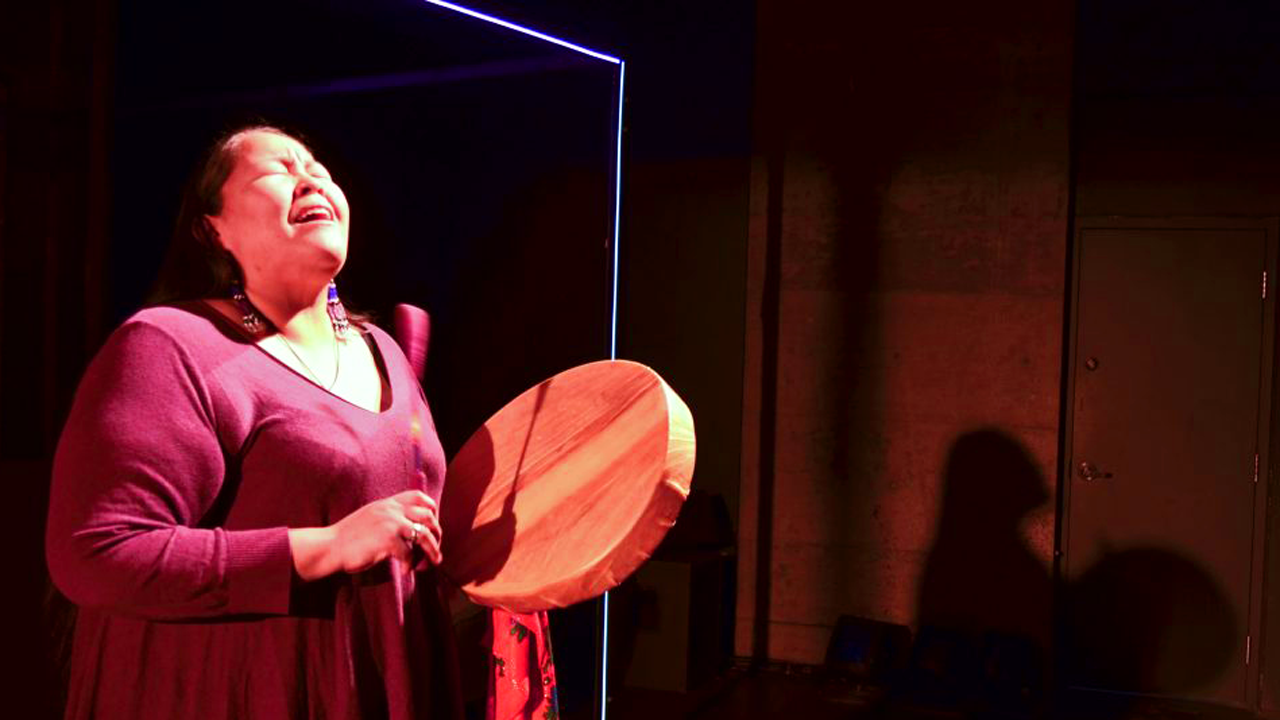For Nina Segalowitz, BA (applied human sciences) 99, National Indigenous Peoples Day is “a chance for Indigenous peoples to shine and educate by showing off what we’re capable of.”
Sixties Scoop
Segalowitz was born in Fort Smith, N.W.T., in 1973, as Anne-Marie Thrasher. At only seven months old, she was seized from her family through a government-led practice later called the Sixties Scoop. “I have copies of the adoption papers with an X through my mother’s name,” Segalowitz says. “She never gave consent for me to be adopted.”
Her father had brought Anne-Marie to the hospital because she was sick. He was asked to sign some papers — what he thought were admission papers — and told to come back the next day to pick his baby up. Yet when he returned, she was gone.
“I was beamed into Montreal,” Segalowitz says. “The farthest they could get me away from my community in order to assimilate me. Soon after, I was adopted into a Jewish-Filipino family.”
Segalowitz is one out of thousands of Indigenous children who were mercilessly “scooped” without permission — effectively stolen — from their communities from the late 1950s until the early 1980s. The children were placed with non-Indigenous families in an attempt to integrate them into Canadian society.
She was adopted by Norman Segalowitz, a Concordia professor in the Department of Psychology, and the late Elizabeth Gatbonton, who was an associate professor in Concordia’s Department of Education.
They were unaware of their new child’s past. When they learned the truth 18 years later, “My parents were shocked,” Segalowitz says. “Knowing who my parents are, they would have never agreed to adopt a stolen baby.”
Trying to fit in
“Growing up was pretty interesting,” Segalowitz says of her Jewish-Filipino upbringing. Yet she adds, “I always felt like I had a hard time fitting in, especially looking the way I do — traditionally native.”
She was the only Indigenous child in her elementary and high schools. “People at school called me ‘contaminated’ instead of using my name,” she recalls of her time at elementary school. “I kind of knew it was a bad thing to be native but I really didn’t know why. I kept telling them, ‘I took a shower today. I’m not contaminated.’”
It wasn’t until she was 18 that Segalowitz met another Indigenous person, at the Native Friendship Centre of Montreal. “For the first time in my life I had found someone who looked like me,” she says. “I didn’t realize until that moment how much I had wanted to have that connection.”
Segalowitz began to look for her birth parents. Unfortunately, she was never able to meet her mother, who passed away when Segalowitz was 16. When she went to visit Fort Smith in 1996-97, she met her birth father for the first time. In the following two years, she connected with her sister and brother.

 Nina Segalowitz was taken from her family and community in Fort Smith, N.W.T., part of a practice now known as the Sixties Scoop.
Nina Segalowitz was taken from her family and community in Fort Smith, N.W.T., part of a practice now known as the Sixties Scoop.
 Nina Segalowitz has performed throat singing across North America and Europe. She first learned the skill at Concordia’s Centre for Native Education, now called the Aboriginal Student Resource Centre.
Nina Segalowitz has performed throat singing across North America and Europe. She first learned the skill at Concordia’s Centre for Native Education, now called the Aboriginal Student Resource Centre.